There is an often misquoted historical myth that Queen Victoria did not believe in female homosexuality or lesbianism, because, “What could [two women] do?” While the quote is false, the mentality behind it, unfortunately, is still prominent. Even now, lesbians are still forced into gender norms of one person having to be “the man” (punch) and virginity being measured on whether one has been penetrated.
So what do female vampires have to do with anything? Well they can penetrate. It doesn’t take a lit student to see that the fangs=penetration, especially with the moaning sounds and blood dripping. That exceptionally heteronormative sexual visual highlights the erotic elements of Victorian horror. Take a woman, give her powers, her own set of phallic weapons, and no need for men in either a sexual or biological manner, and you have probably the most terrifying image of a woman in Victorian times. Hell, even now.
It’s that dual possibility for empowerment and titillation that makes the lesbian vampire such a rich figure in pop culture analysis. We are presented with a powerful figure that, despite it’s over two-hundred-year-old history, rarely makes it into media as the lead the way we’ve gotten our Lestats, Spikes, Angels, Bills, and Erics—even our Edwards.
The Vampire Lovers (1970)
Probably the trope-maker of a lot of the eventual archetypes associated with the lesbian vampire genre, The Vampire Lovers is based on the novel Carmilla by Joseph Sheridan Le Fanu. Our vampire is Countess Carmilla (Marcilla) Karnstein, and she spends the majority of the film slowly seducing the main romantic interest, Emma.
Carmilla is shown to prefer women and actually seems to have deep feelings for Emma, despite slowly killing her. However, this is juxtaposed with all the fan service. Madeline Smith and Ingrid Pitt’s cleavage deserve a billing of their own, as every scene takes advantage of their form-fitting gowns and low-cut dresses. The two victims, Emma and Laura, are doe-eyed ingénues, and the more seductive adult women, Carmilla and The Governess, are dark-haired temptresses who are assertive in their desires. The Governess is very open with her affection for Carmilla but is rejected and killed because vampires only like ’em innocent and naive.
In the final hour, Emma;s rescued from Carmilla by a super-basic guy named Carl, and the male heroes impale Carmilla and behead her. Lesbianism is seen as a destructive and consuming, despite all the undertones. Part of the problem is that Emma is portrayed as painfully innocent in comparison to Carmilla’s older, mature womanhood. This is heavily emphasized during a scene where Carmilla dismisses a romance novel the two are reading:
Carmilla: “Pulling her gently towards him, he showered her sweet upturned face with manly kisses.” [Chuckle] This is a silly book.
Emma: But it’s a lovely story … Don’t you wish some handsome young man would come into your life?
Carmilla: No. Neither do you, I hope.
Emma: I’d like to see one. I wish Carl would come again.
The Vampire Lovers is male gaze 101 when it comes to its depiction of a woman in love, and of course, it ends with Carl and Emma together in a happy heterosexual bubble.
True Blood (2008 – 2014)
True Blood occupies a strange space when it comes to LGBTQ analysis, because it has plenty of queer characters and was written by a gay showrunner, yet throughout the show’s six years, it, like most of the popular vampire shows around, revolves around a heterosexual love triangle. The long-term gay couples are few and do not get the same sexually explicit love scenes. I mean, we had to watch Bill and Sookie have sex after Bill came from unground—dirty mud penis is not good for the vagina, just saying.
Pam is an awesome character and, with the exception of Eric, is shown to date women. Now before the frustration comes out, let me reiterate: Pam is amazing and probably one of the best characters on the show, however, in terms of lesbian relationship representation, the show falls short.
Pam’s first on-screen sexual encounter with a woman happens in season three with the character of Yvetta, where she is seen performing oral sex on her. The problem is that Yvetta is shared by both Eric and Pam in the show, with Eric essentially getting first dibs on Yvetta anyway and him being the main object of her affections. In fact, the sex scene between Yvetta and Eric is shown in the premiere of season three, with him using his vampire speed to preform some pelvic sorcery.
In seasons five and six, Tara and Pam enter into a relationship. Some call Tara’s newfound bisexuality into question writing-wise, because there is no real transition into her dating women between seasons three and four, but in my opinion, there was nothing that said she was 100% straight before, so (shoulder shrug). Pam and Tara’s relationship is … ehhh. My biggest problem with is that, as important as that relationship is, it constantly takes a backseat to Pam’s relationship with Eric. She lets Eric manhandle Tara and abandons Tara to look for Eric, so despite all the love they have, it’s not a relationship of equals. Kissing is great, but there has to be more than that, and because this is a show with a gay showrunner, there’s an expectation of that to be understood.
We Are the Night/Wir Sind Die Nacht (2010)
The German film We Are the Night is an amazingly complex film dealing with the themes of suicide, depression, immortality, and lesbianism. Overall, this movie is very well made, has an extremely talented cast, and delves into some amazing action sequences. Sadly, we also have the return of the predatory, life-destroying lesbian vampire.
Louise is the leader of the vampires and over 200 years old. She turns the heroine, Lena, into a vampire against her will by biting her in a dance club while she’s drinking. Sounds familiar. Louise stalks the new baby vampire and helps integrate her into their all-female society. It is explained that male vampires were exterminated due to their arrogance, and the remaining women made a pact never to turn another man. Throughout the film, Louise is very sexually and emotionally aggressive towards Lena, who shows zero romantic interest towards Louise.
It’s unsettling and uncomfortable to watch, especially when Lena develops feelings for the good guy cop, Tom (Wolfgang from Sense8), and Louise’s actions are just making existence more difficult for her companions. Despite depicting this vampire world as one where the women are empowered, Louise seems driven by romantic desires and completely unaware of the psychological damage she’s inflicting upon her companions.
Ultimately, Louise is driven by the desire to find romantic love and becomes irrational, destroying the community she has built for one woman who has no interest in her. It’s compounded by the fact that Louise’s two other companions—Charlotte and Nora—are her equals and do love her, but it isn’t enough; she has to have this straight woman, and it destroys her.
The Moth Diaries (2011)
Women with L-names are just victim traps in vampire films, especially if they’re named Lucy. The Moth Diaries, based on the 2002 novel by Rachel Klein, is a mashup of both Dracula and Carmilla.
Rebecca attends an exclusive boarding school for girls and is still dealing with the aftermath of her father’s suicide two years ago. She’s done so, largely, by emotionally latching onto her best friend, Lucy. Everything changes when a new student, Ernessa Bloch, arrives and begins slowly removing all of Rebecca’s friends from her life, including Lucy.
Rebecca spends most of the movie trying to explain how strange Ernessa is and warning everyone to stay away from her. Lucy and the others view her as just being jealous, and even though it’s never stated, it’s very clear that Rebecca is in love with Lucy. They do try to insert a scene of her kissing her male teacher, but I personally think that’s just for show, because Rebecca doesn’t seem to enjoy it.
I actually really enjoy this movie, especially because Sarah Bolger is in it, but again again: predatory female vampire destroys the female victim, female homo-sexuality is destructive and obsessive, and a dash of male love interest is thrown in. However, Ernessa is an interesting lead character, and the film very artistically blends the Gothic themes with the modern world to make what is, overall, a gorgeous movie.
Carmilla (2014 – Current)
I first heard about the webseries Carmilla through a friend recommendation on Tumblr, and I was slightly interested, because I do love female vampires, but as you can see, I’ve been burned before. But I really enjoyed The Jane Diaries and its way of working Pride & Prejudice into the web series format, so I gave it a shot.
Accepting that this is a very hyperbolic statement, I will still say that Carmilla is the best lesbian vampire series ever. With the exception of Lost Girl, I don’t think I’ve seen so many main characters who aren’t straight in one place and treated with so much respect. Our main heroine, Laura, is a smart, plucky ingénue who becomes caught up in an investigation about missing girls once her own roommate goes missing and is replaced with the mysterious Carmilla.
The series is a modern vampire romance story with a little bit of mystery thrown in. Of the main cast, three are lesbians, and one is non-binary. Their sexuality is not treated as something that needs to be announced; the narrative shows the attractions are there without having to announce, “Hey, look! Lesbian here!” At the same time, it doesn’t do the whole “We are avoiding labels so no one can guess if we are really queer or not” game. All the characters are fun, Laura is a dork with a heart of gold, and Carmilla is finally given her due as a complex female vampire heroine struggling with her own morality.
All the female relationships throughout the show are explored, and the male characters are well-thought-out and examined without feeling forced into the story. There’s also no male-gaze fan service, no lesbian destroying morals, and no male love interest who’s there to make sure audiences don’t feel uncomfortable. It’s pretty much perfect, and it’s on YouTube. Go watch. Go! Go!
Vampires are supposed to be (if we are going old-school) evil, bloodsucking monsters who manipulate, kill, and destroy. I have no problem with that, except when the thing that’s corrupting them is lesbianism. Even in books like Dracula, yes, he is seducing Mina and Lucy, but they’re also being saved and protected by their male love interests. In True Blood, The Vampire Diaries, Twilight, and even Buffy, the fact that being in love with a vampire is dangerous is not portrayed in the same way as when it’s been a female vampire seducing another woman. The fact that the biggest vampire shows of our generation are all heterosexual romances shows that society doesn’t have a problem with women being seduced by the dark side.
The larger and more dangerous issue is that lesbians, despite getting more visual representation, are still being used for the male gaze, still the punchline of jokes, and homosexual attraction between women is sometimes treated as a phase that all girls go through at some point before making it back to the other side. This is not only degrading to lesbians, but also bisexual women, who are largely mislabeled or around to, again, reassure men that they have a chance too.
Our monsters are an extension of ourself, the good and the bad, and our ability to examine and evolve those archetypes shows just how far we’ve come. It took over 140 years to get a well-made lesbian vampire show, and because it’s online, it’s something that anyone with the Internet can get access to, which shows that despite how slowly it’s happening, we are getting there.
Princess Weekes is a full-time writer, part-time Barista originally from Brooklyn, but camping out in Queens, NY. When she isn’t catching up on Netflix or stressing about student loans, she reads about dead white royality. She runs a small YouTube Channel under the username Melina Pendulum and hopes to someday finish that novel. Find her on Twitter or Youtube.
—Please make note of The Mary Sue’s general comment policy.—
Do you follow The Mary Sue on Twitter, Facebook, Tumblr, Pinterest, & Google +?



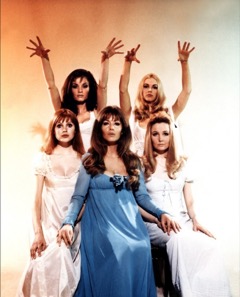
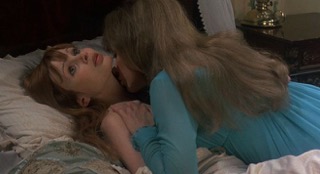
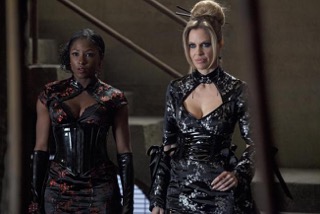
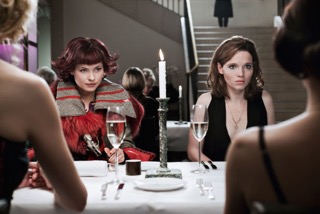
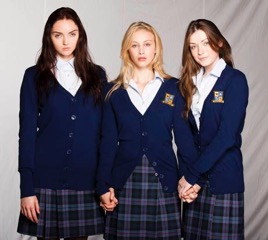
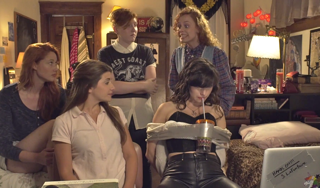
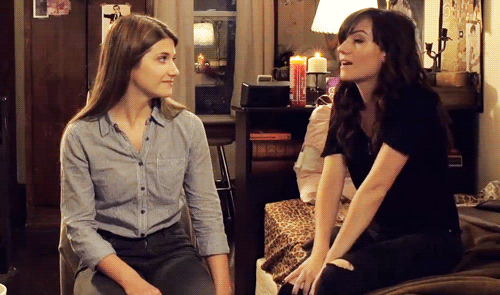





Published: Jan 8, 2016 02:08 pm